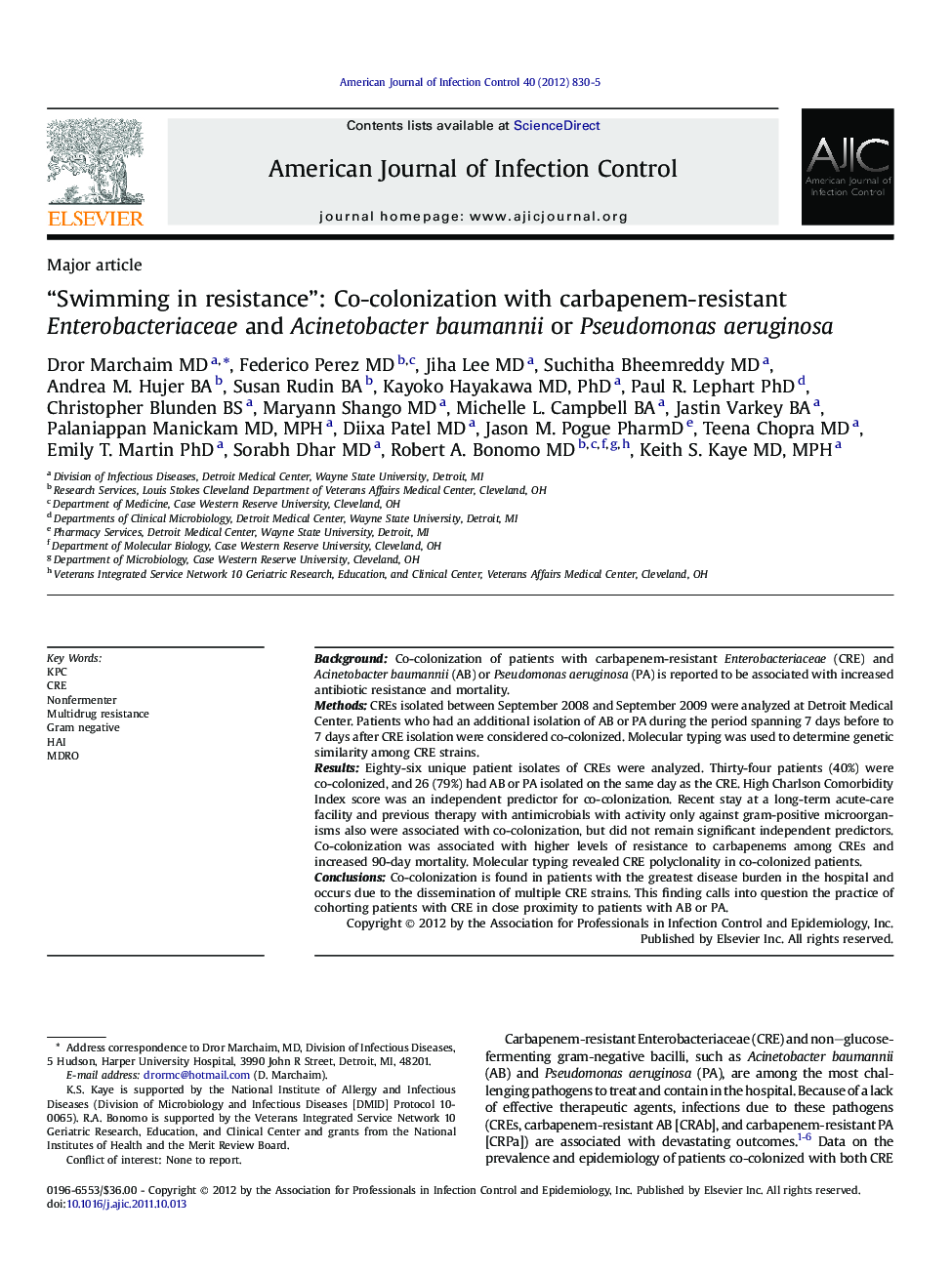| Article ID | Journal | Published Year | Pages | File Type |
|---|---|---|---|---|
| 2640147 | American Journal of Infection Control | 2012 | 6 Pages |
BackgroundCo-colonization of patients with carbapenem-resistant Enterobacteriaceae (CRE) and Acinetobacter baumannii (AB) or Pseudomonas aeruginosa (PA) is reported to be associated with increased antibiotic resistance and mortality.MethodsCREs isolated between September 2008 and September 2009 were analyzed at Detroit Medical Center. Patients who had an additional isolation of AB or PA during the period spanning 7 days before to 7 days after CRE isolation were considered co-colonized. Molecular typing was used to determine genetic similarity among CRE strains.ResultsEighty-six unique patient isolates of CREs were analyzed. Thirty-four patients (40%) were co-colonized, and 26 (79%) had AB or PA isolated on the same day as the CRE. High Charlson Comorbidity Index score was an independent predictor for co-colonization. Recent stay at a long-term acute-care facility and previous therapy with antimicrobials with activity only against gram-positive microorganisms also were associated with co-colonization, but did not remain significant independent predictors. Co-colonization was associated with higher levels of resistance to carbapenems among CREs and increased 90-day mortality. Molecular typing revealed CRE polyclonality in co-colonized patients.ConclusionsCo-colonization is found in patients with the greatest disease burden in the hospital and occurs due to the dissemination of multiple CRE strains. This finding calls into question the practice of cohorting patients with CRE in close proximity to patients with AB or PA.
